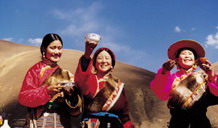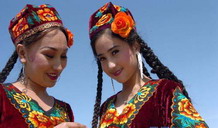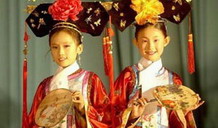History and Folk Culture of the Mongolians
A Mongolian family usually consists of parents and their children. When the son gets married he usually lives in a separate home close to his parents. Families are also formed of several married brothers and sisters-in-law in the farming and semi-farming areas.
Mongolians are known as "a people of music and poetry." Their singing is sonorous, bold, passionate and unconstrained.
"Haolibao" is a popular Mongolian form of singing to set melodies with the words improvised extemporaneously. Also popular are many other forms of singing including "Mahatale" (paean), "Yurele" (congratulation), "Dairileqi" (antiphonal singing), riddles, proverbs, stories, legends, fairy tales and fables.
Mongolian dances are known far and wide. The best ones include the "Saber" dance, the "Ordos" dance, "Andai," "Buryat Wedding," "Horse Breaker" and "Little Black Horse." "Wine Cup" and "Chopsticks," widely recognized as the most lively Mongolian dances, are known for their brisk steps.
The horse-head fiddle is a favorite musical instrument of Mongolians. It provides fine accompaniment to solos with its low and deep, broad and melodious sounds.
On the grasslands, the Nadam Festival is held each August by the Mongolians to celebrate their good harvest, lasting five to seven days. Contests such as archery on horseback, wrestling, horse racing and other traditional activities are held. The Bai Festival is the Mongolian New Year.
Mongolians always offer the breast and tail of a sheep or lamb as a special treat to distinguished guests, and drink wine and sing songs to entertain guests while they eat. Presenting Hada, a strip of white silk, to a guest is considered polite by Mongolians.






